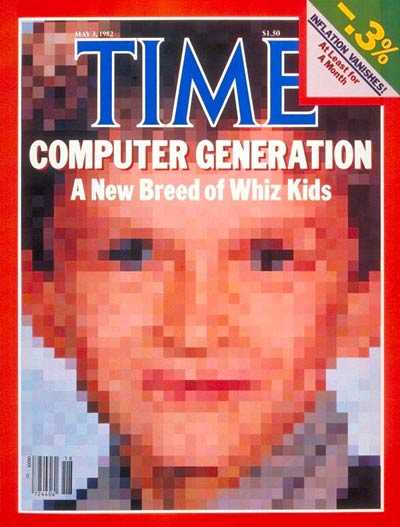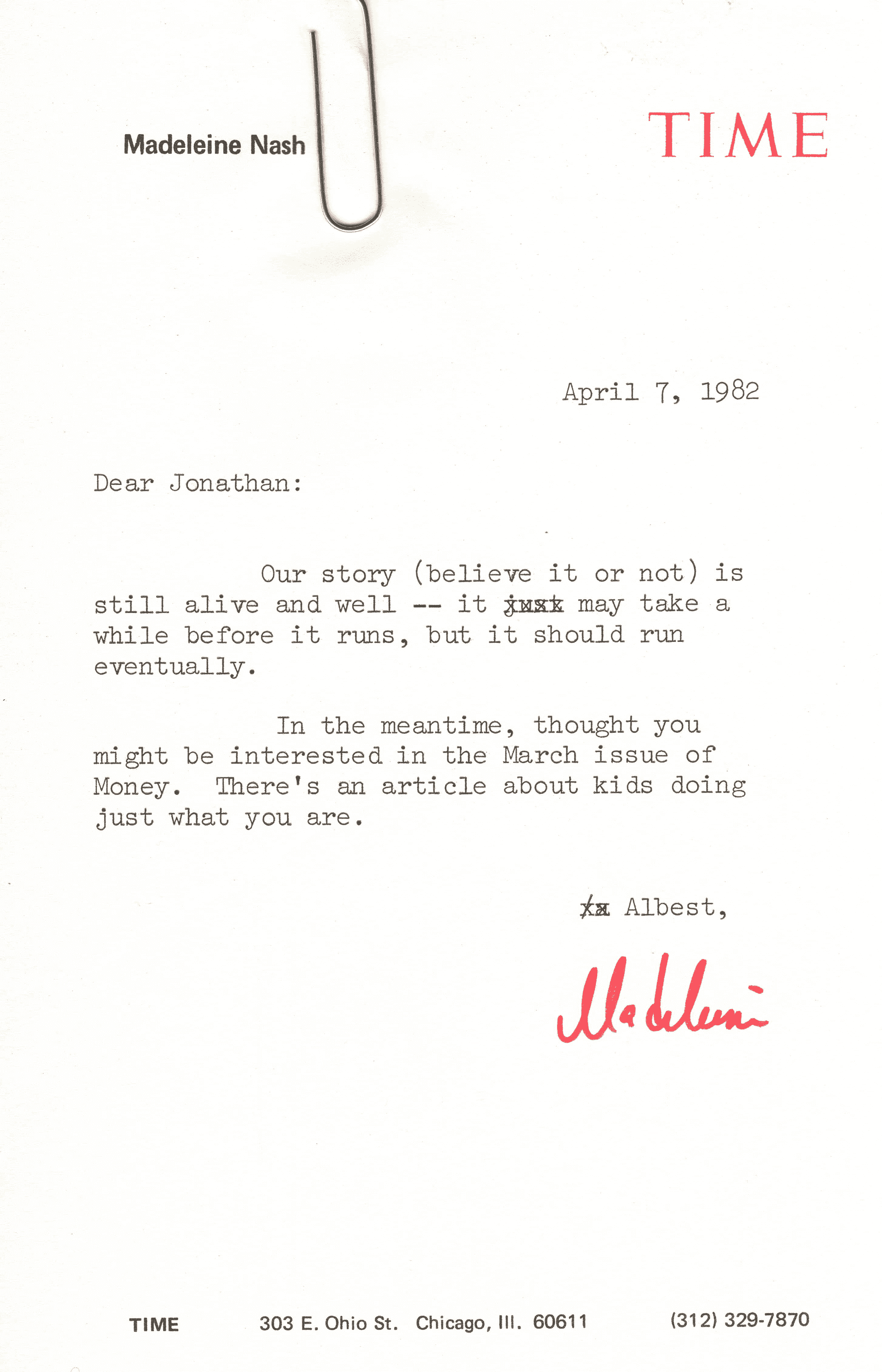Aristotle Software
At the start of high school, inspired by Jobs and Woz (whom I later met at Berkeley!) and the classics we’d studied, I co-founded a startup, Aristotle Software, with my friend Kay Borzsony in 8th grade, authoring and publishing games and graphics tools we dreamed up and built from scratch.
We conceived, designed, built, advertised, promoted, packaged and sold a number of games, utilities and graphics apps for Apple computers, starting with Alpha Program Pack in 1981, quickly followed by a graphics editor and a series of increasingly ambitious adventure games and video games.
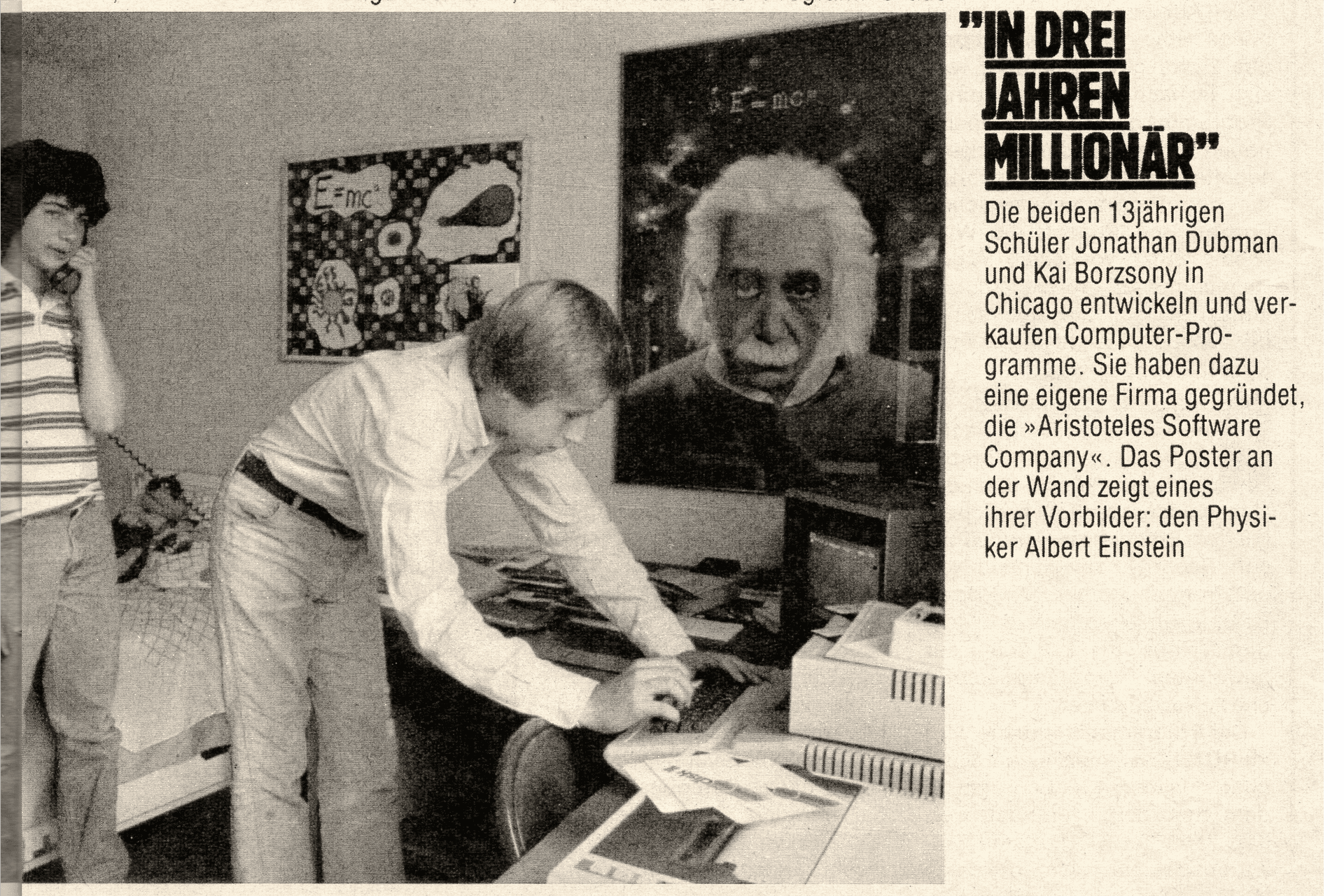
Above: A typical scene at our Dearborn St. office. I’m shown here on the phone, with Kay Borzsony at his Apple II (the original model - not the Apple II minus!) From the August 12, 1982 issue of Stern Magazine.
Spinning up the business
Aristotle Software advertised and sold direct, in addition to local retail. I made a list and cold-called all the national distributors I could find, who asked about ads, so I designed and placed ads in print magazines (as this predated online advertising by many years.) I invested some of the profits in better hardware to speed up my work. I recruited the most talented and creative young people in my network - it was like a teenage software syndicate - and worked with them to develop a pipeline of new games and utilities we could bring to market.
It was a thrill to get actual fan mail from paying customers who had no idea who we were and that we were just entering high school.
Steve Jobs speaks about us
To our delight we got the attention of our idol Steve Jobs, who spoke publicly about our company, by name. Kay joined him on stage in Chicago and proudly wore the brass Apple belt buckle they had presented to him that both Steves had signed.
We were also thrilled that the first batch of sales of our graphics editor, from a retail store on Chicago’s Michigan Avenue, included a sale to famous rock musician and producer Todd Rundgren, who was into laser light shows.
Interviewed by TIME Magazine
We and our company quickly achieved remarkable notoriety, featured in the TIME magazine cover story on “Computer Whiz Kids” in May of my freshman year, which I proudly purchased from a retail newsstand and carried home on a 300-mile bike ride across Wisconsin with classmates. As a quote indicated, my business partner and I felt empowered by the apparent lack of ageism in this new industry - which to us meant, no bias against children!
Media frenzy
The phone started ringing off the hook and we got all kinds of local, national and international press, including Stern in Germany, and Evening Magazine on TV.
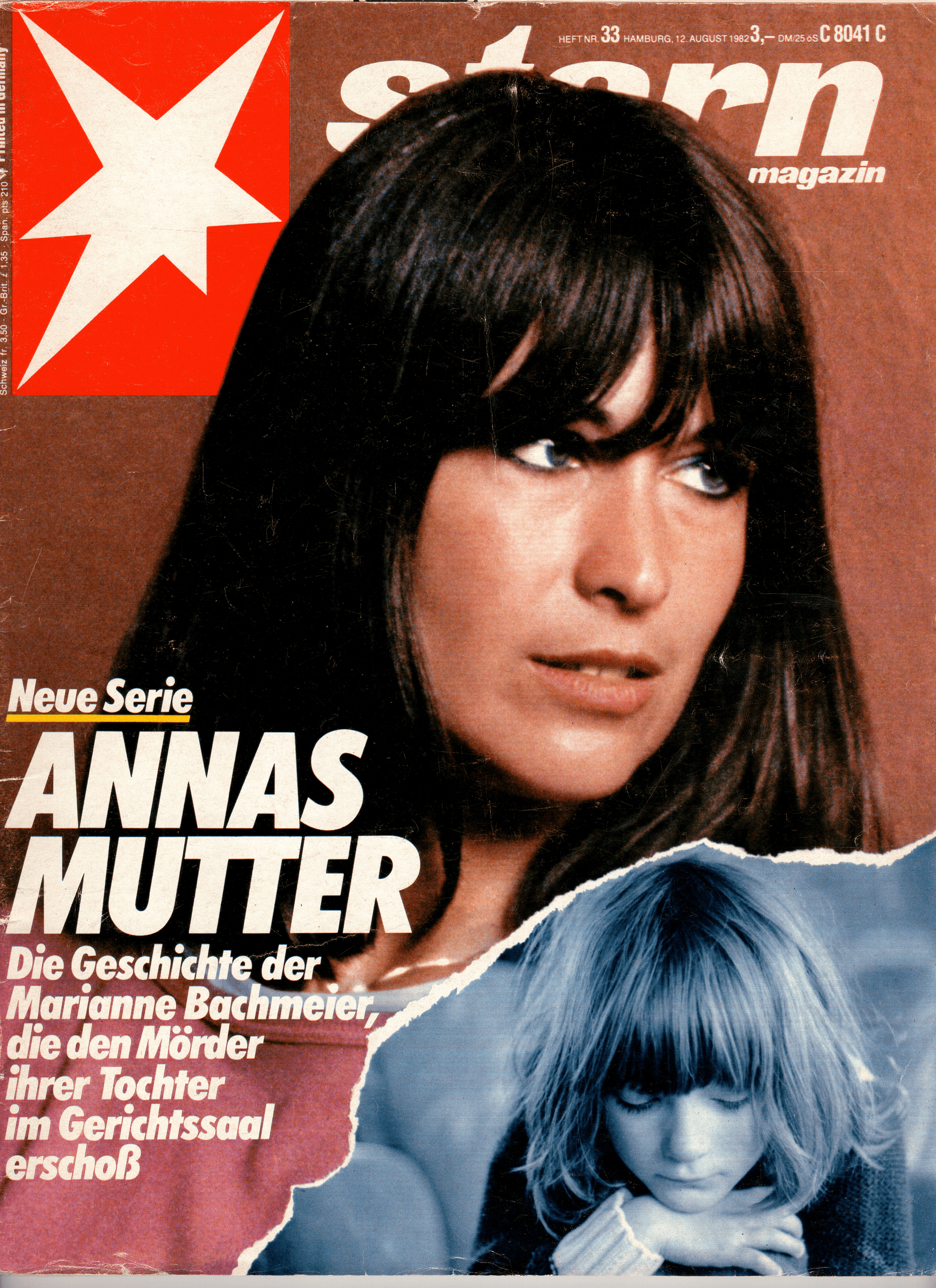
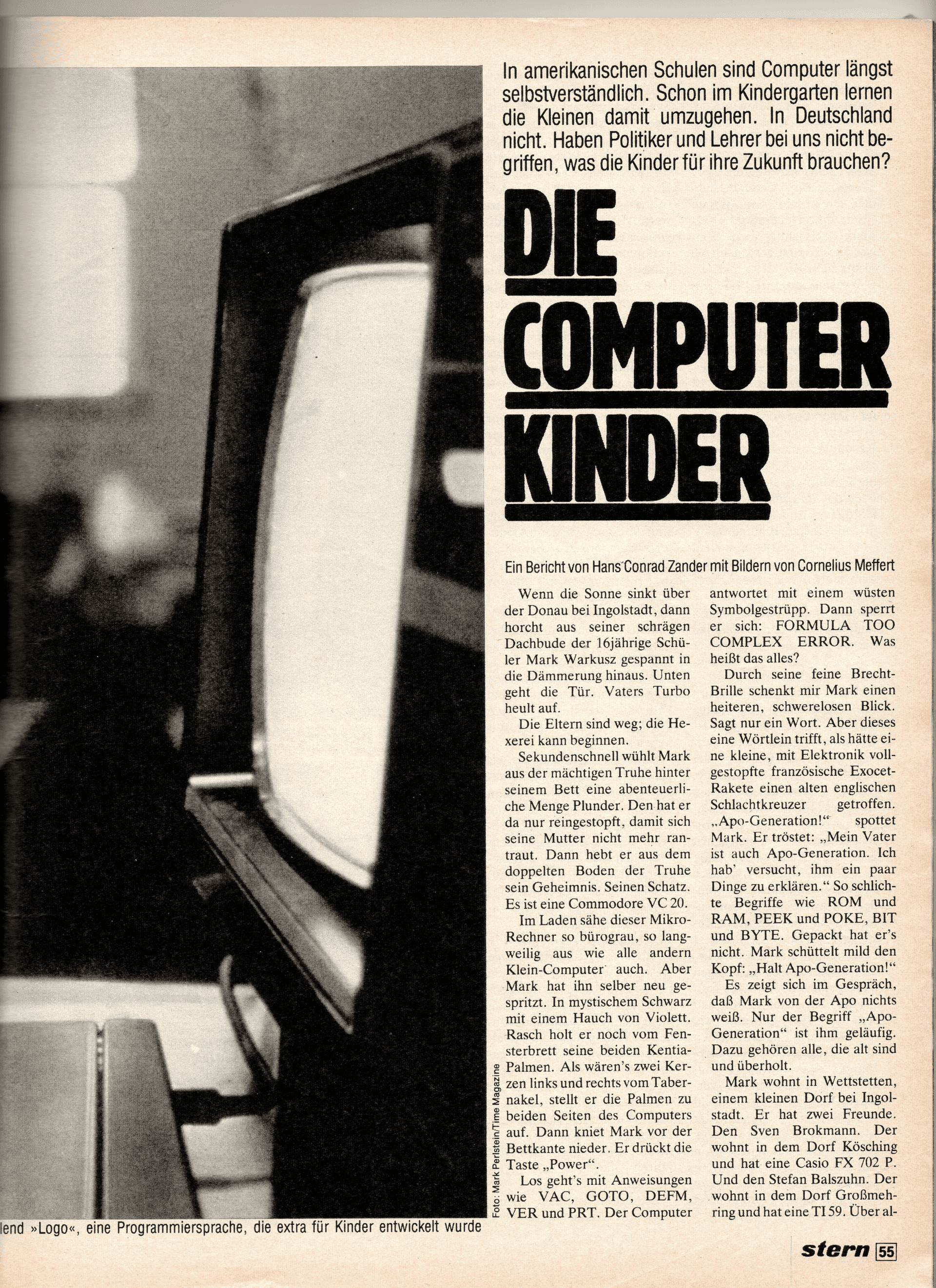
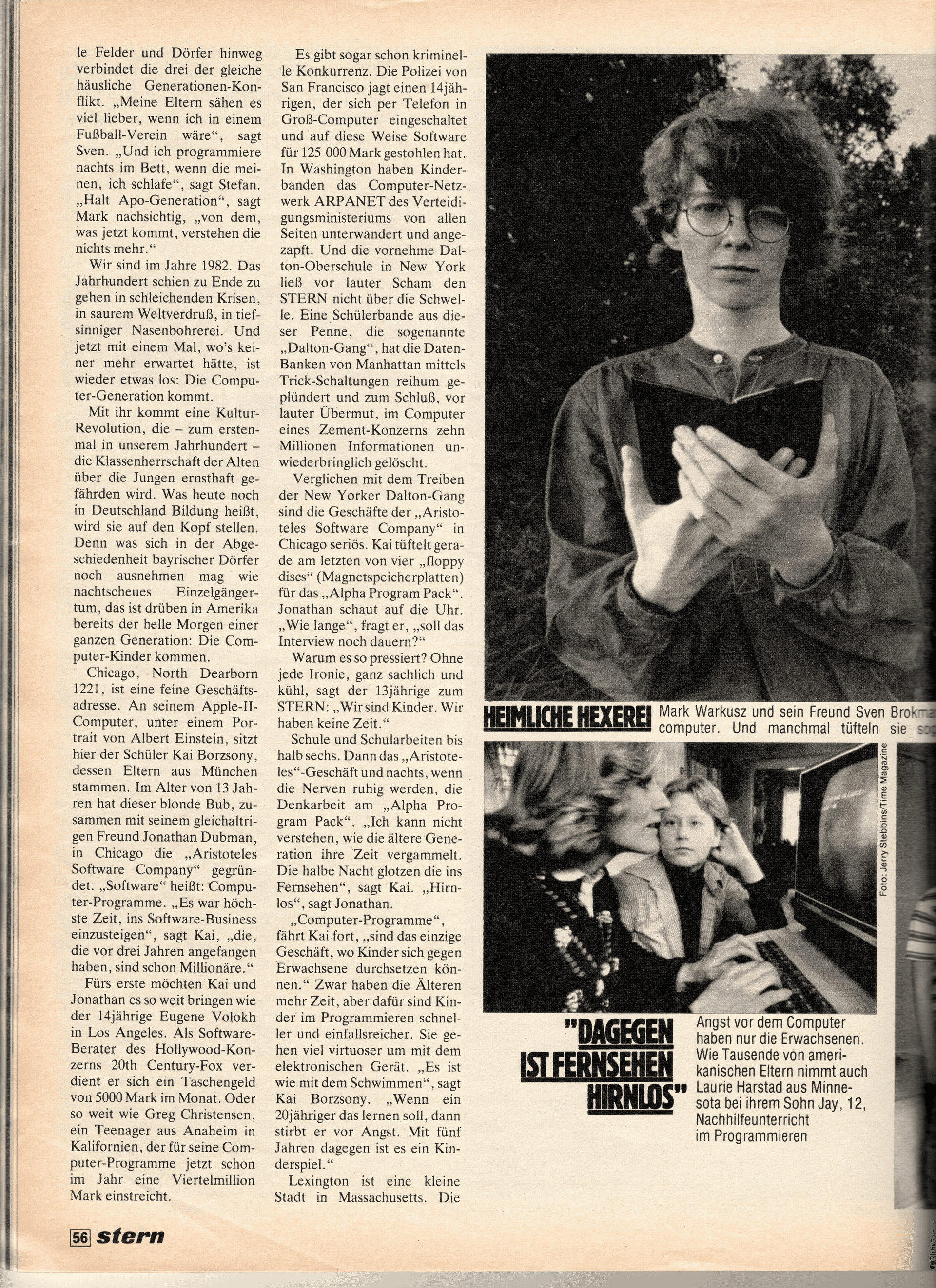
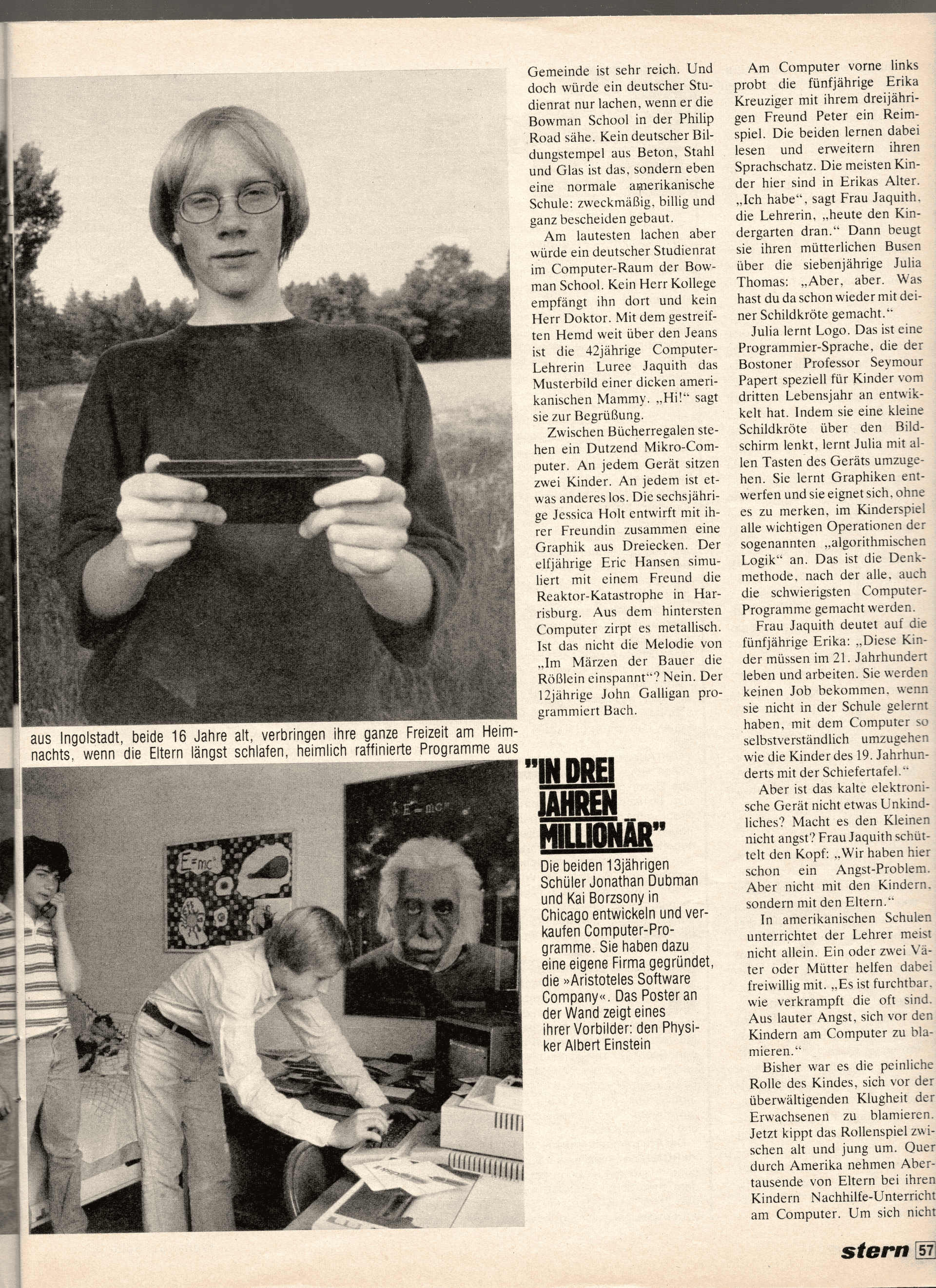
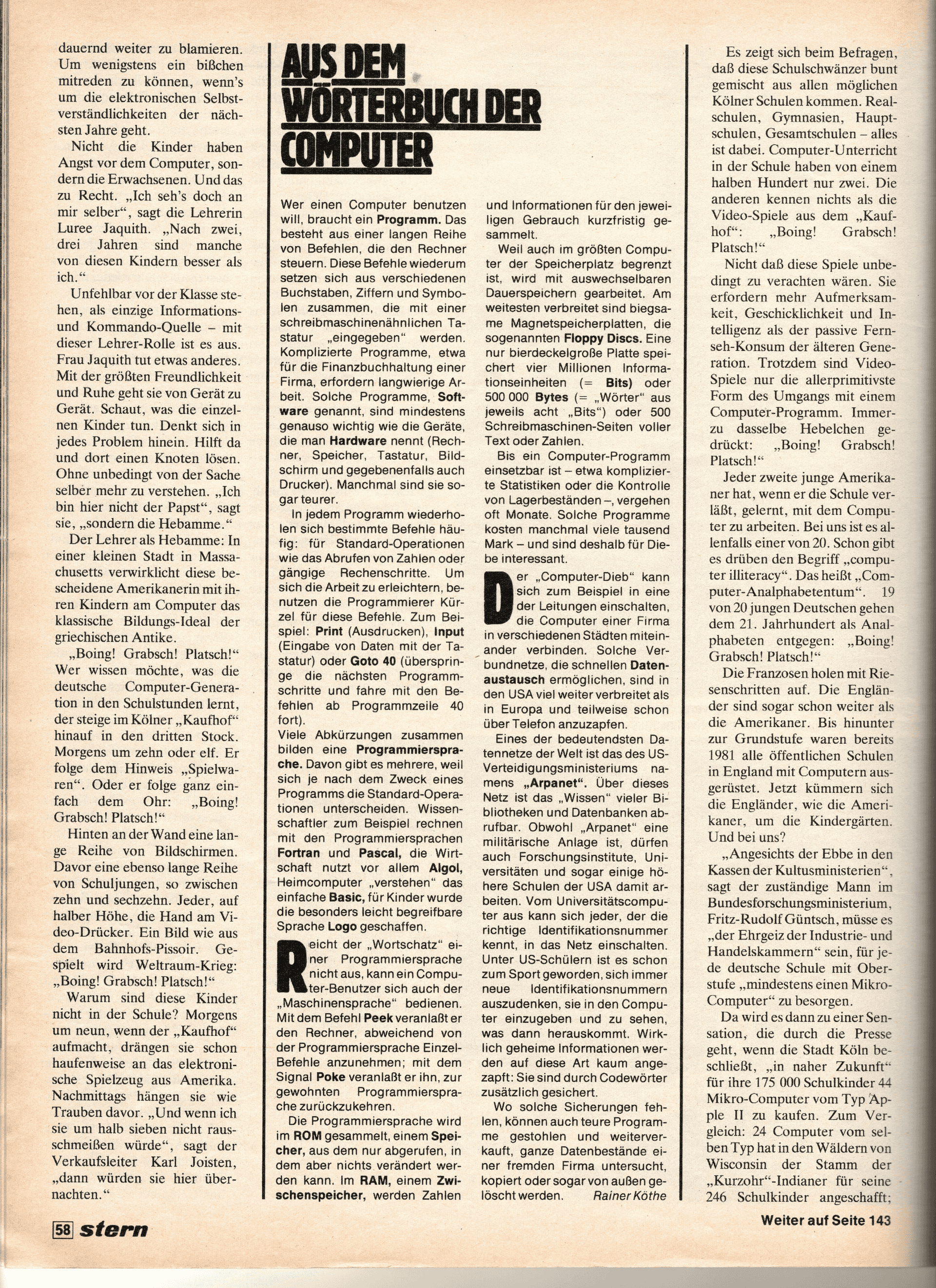
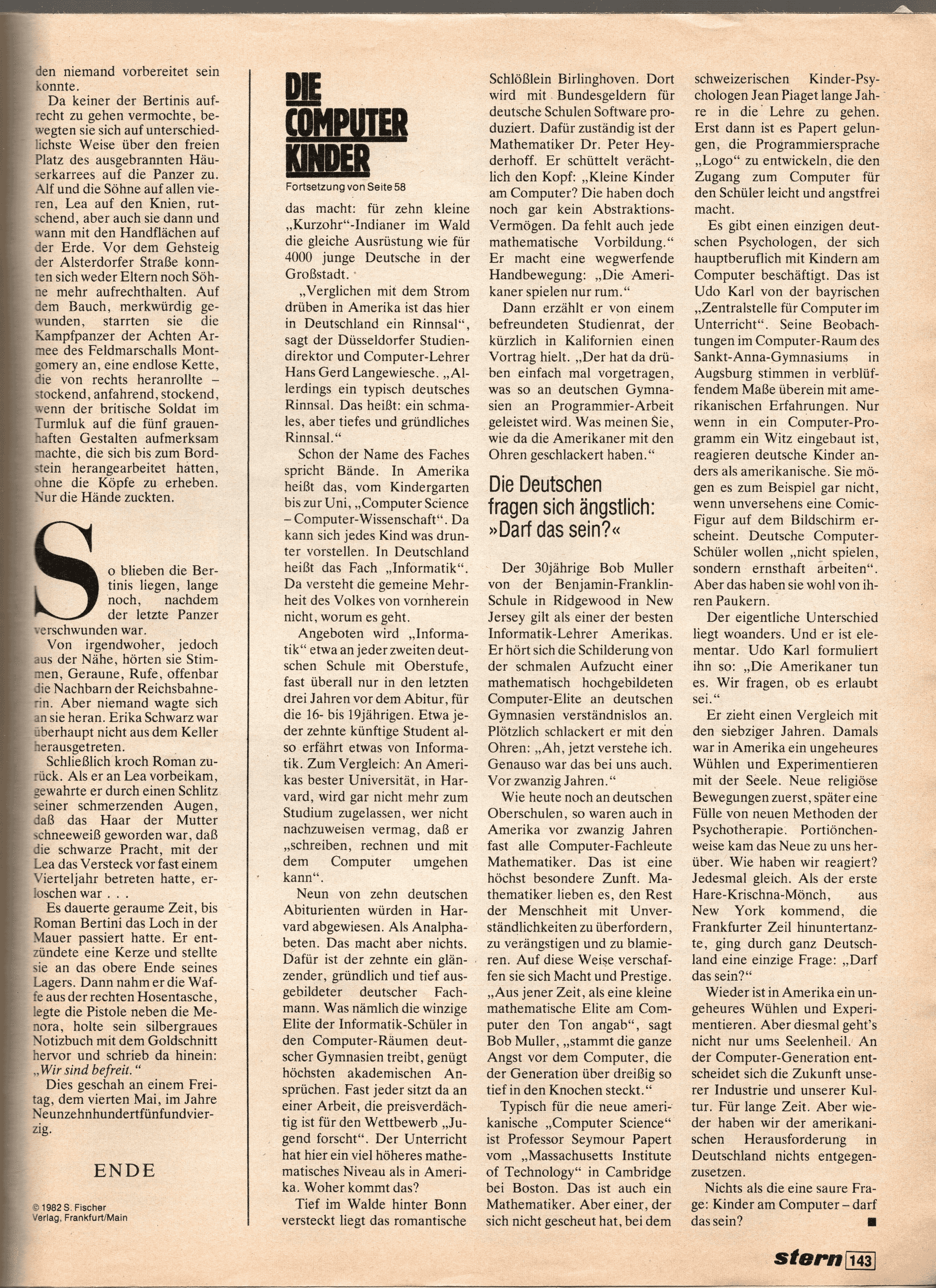
Excerpt from Stern Magazine, 12 August 1982. This piece mentioned our Alpha Program Pack, and went into some detail about us - in German.
None of this fazed me. I’d been on radio for 3 years running, and been interviewed on TV for other reasons. I got recognized in public while walking to junior high. I remember one doorman from an apartment building on my walk to school in Chicago who ran out to stop me on the street and tell me he just had seen my interview with Warner Saunders, and predicted I was going to be president one day. It felt 95% great, and 5% weird, being recognized in public, which happened a lot later on.
Quasar
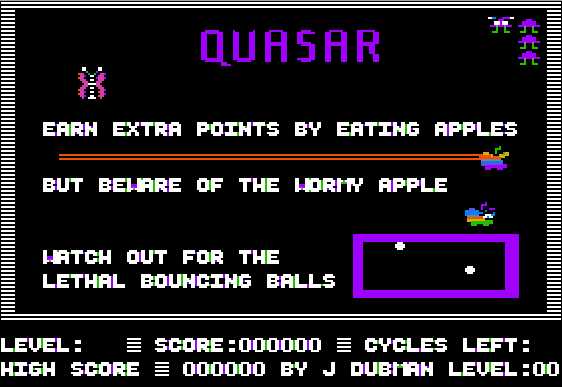
By my sophomore year, I moved beyond BASIC and Pascal and built the classic Apple II video game Quasar in pure 6502 assembly language.
The 6502 was like an 8-bit RISC processor and coding in assembly gave me the power to do smooth hi-res graphics animation on a 1 MHz machine. 100% of the code executed was hand authored by me, all 88 pages of it when printed out in the tinest font. I did not call one single function in the OS, which was so minimal it didn’t have anything that would help me. I even designed that graphical font and coded it by hand, pixel by pixel, and built my own drivers to let me overlay text and graphics, which the Apple II couldn’t do out of the box. I drew the caterpillars, butterflies, apples and wormy apples and invented all sorts of optimizations with preshifted, precalculated shape tables to get everything to smoothly animate at once. I turned that animation code into a paper on computer graphics that was recognized by the Westinghouse Talent Search.
Our advertising yielded not only sales, but thoughtful, enthusiastic, unsolicited fan mail from new users. Spurned by distributors in our attempts to expand beyond individual retail stores, we were now getting some traction going direct.
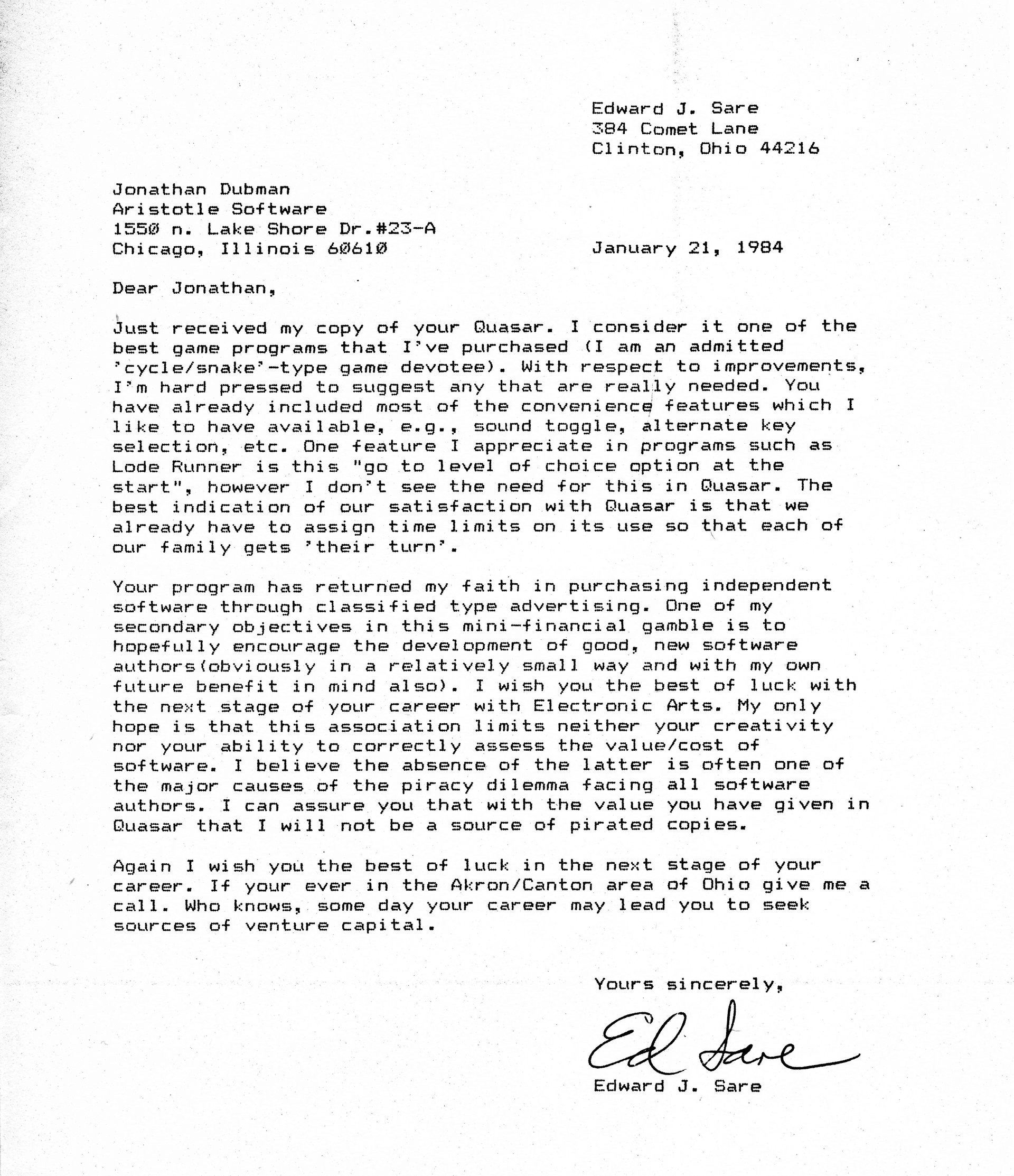
Our sales were modest, but Quasar was widely distributed nonetheless (widely pirated!) and became so popular it got banned at my school. There were printed signs on the wall in the lab about it… at least until I was running that lab myself over the summer. Down they came!
I corresponded with the adult founders of Electronic Arts, Broderbund, Penguin Software and others, who were all impressed, and tried stirring up joint ventures with them. The gameplay was great; despite its somewhat derivative origin as a “snake game” variant I think it would have sold well with real backing and a branding touch-up. I should have sent them a videotape of a room full of kids playing the game.
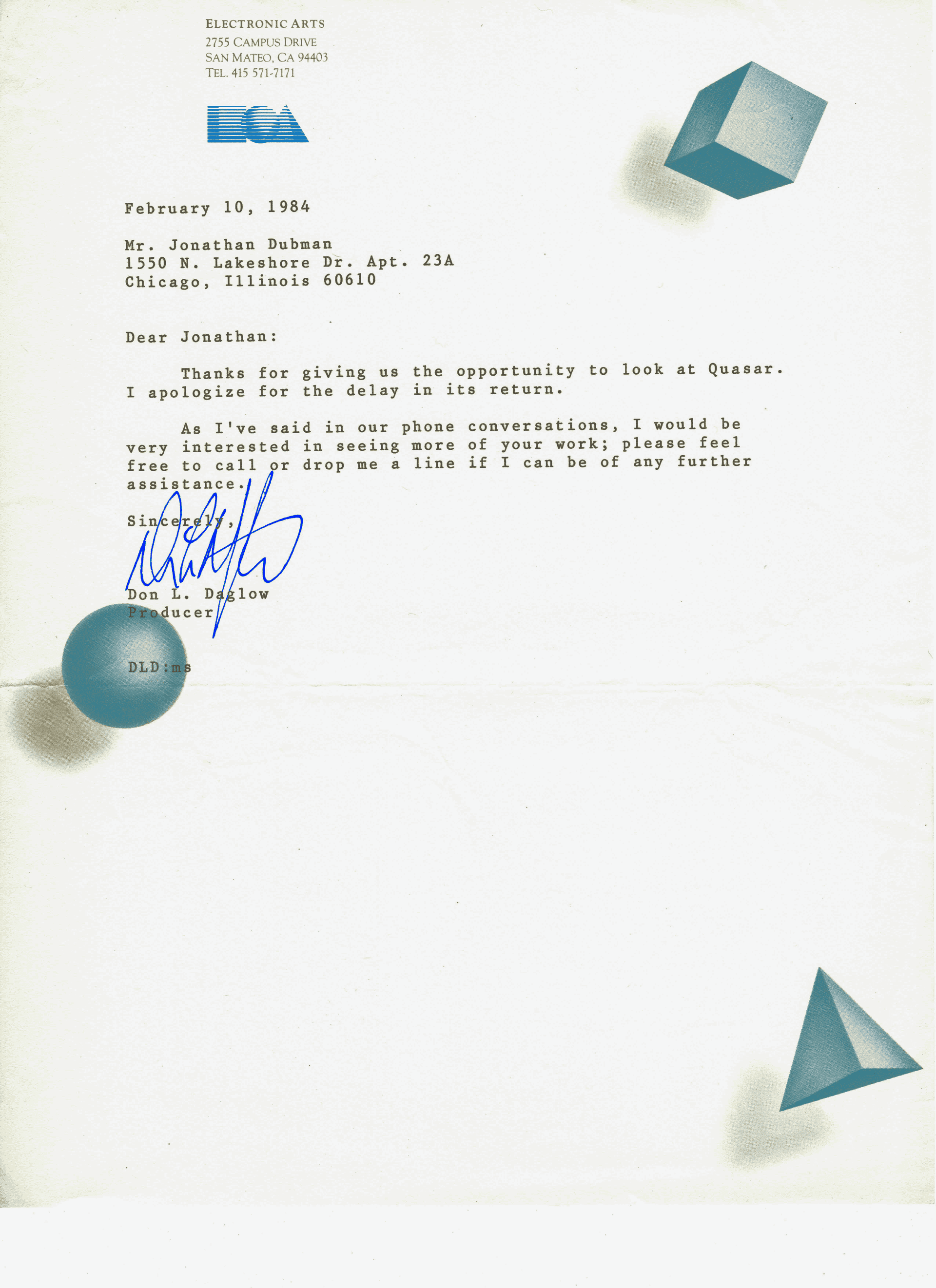
Other projects
Among of the games I co-authored (with my good friend John Kackley) was a fully functional text adventure, the Mines of Mordock, incorporating a big state machine that could produce generative text, a work of interactive fiction in the mold of Zork. The interactive, natural language chat-like aspects of the game might be worth a post of their own, but I can’t locate the source code to revisit it. About half the effort was collaborative creative writing.
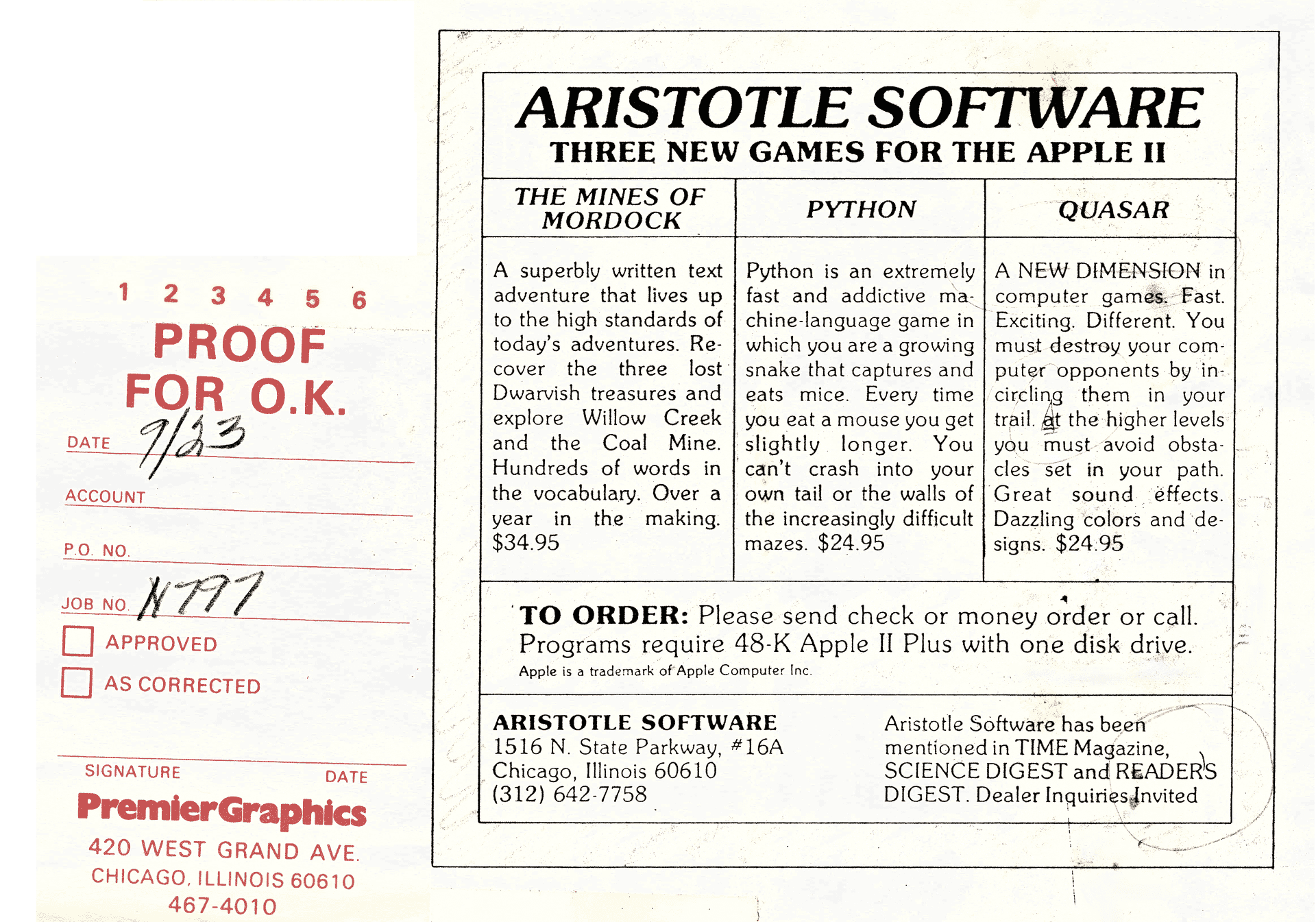
I got pretty far on two projects that proved too ambitious to complete. The first was a general purpose database that I restarted eight times with different approaches… a hard problem, especially on an Apple II. When dBase III came out in 1984, I thought, well, that’s really better than I was even trying to do, and I moved on.
The second was a sprite-based Arcade Construction Set with graphical authoring tools, a platform for game development that I was building with Electronic Arts in mind, as I was corresponding with them. I managed to build some tools I could use myself - I got as far as a working graphical font and sprite editor with a corresponding animation library. I had a strong intuition that there would be an appetite for this kind of thing, but turning the tools into a sellable product was a lot more work, and my sense was that the market for such a product at that time was too small to be worth the heroic effort it would have required to make a junior version of something like NeXT’s Interface Builder on an Apple II.
Teaching and learning at the same time
I enrolled in some advanced CS and math classes, but mostly taught myself how to code. Starting at age 16, I served on the summer school faculty at the same high school where I was enrolled, The Latin School of Chicago. I taught math (Algebra) and computer classes, including Pascal, graphics and assembly language. The school originally hired me to co-teach the class with another student, but he had to drop out after students were already enrolled, so I did it on my own. I did so well they hired me back four years in a row.
Class size varied but it was never too big for 1:1 instruction. Sometimes the age range was substantial — like 4th grade to 10th grade, when I was barely more senior than my oldest student — but that never got in the way. In one Algebra class I had an interesting mix of students who had flunked the class during the regular school year, plus the most ambitious incoming students who wanted to get ahead. I decided to enrich the math program by graphing functions on the computer. When one of the do-over students kept her motorcycle ride idling outside on a summer evening in order to fix a bug in her code, I knew I was doing it right. I had one student four years in a row, also a good sign.
I got a lot of experience devising the curriculum for programming classes, experience which would later help prepare me to teach software engineering at Yale.
A friend’s dad who wrote for computer magazines got us press passes to the Consumer Electronics Shows, several years in a row. I soaked up everything I could about technology and the tech industry.
Escape velocity
I look back through all the correspondence and press coverage (there’s a lot I didn’t post) and reread a later interview with my dear friend Kay, and I realize that he was absolutely right about something important that I didn’t fully appreciate at the time: We were capital constrained in a big way and should have done a real seed fundraising round instead of relying on organic growth. I went back looking for one of our ads which I remembered having appeared in the April, 1982 issue of Softalk Magazine. It generated sales, but what if it had been a more visible and effective ad? It was an textual ad for a graphics editor, and it took some time to spot, even when I knew which page it was on.
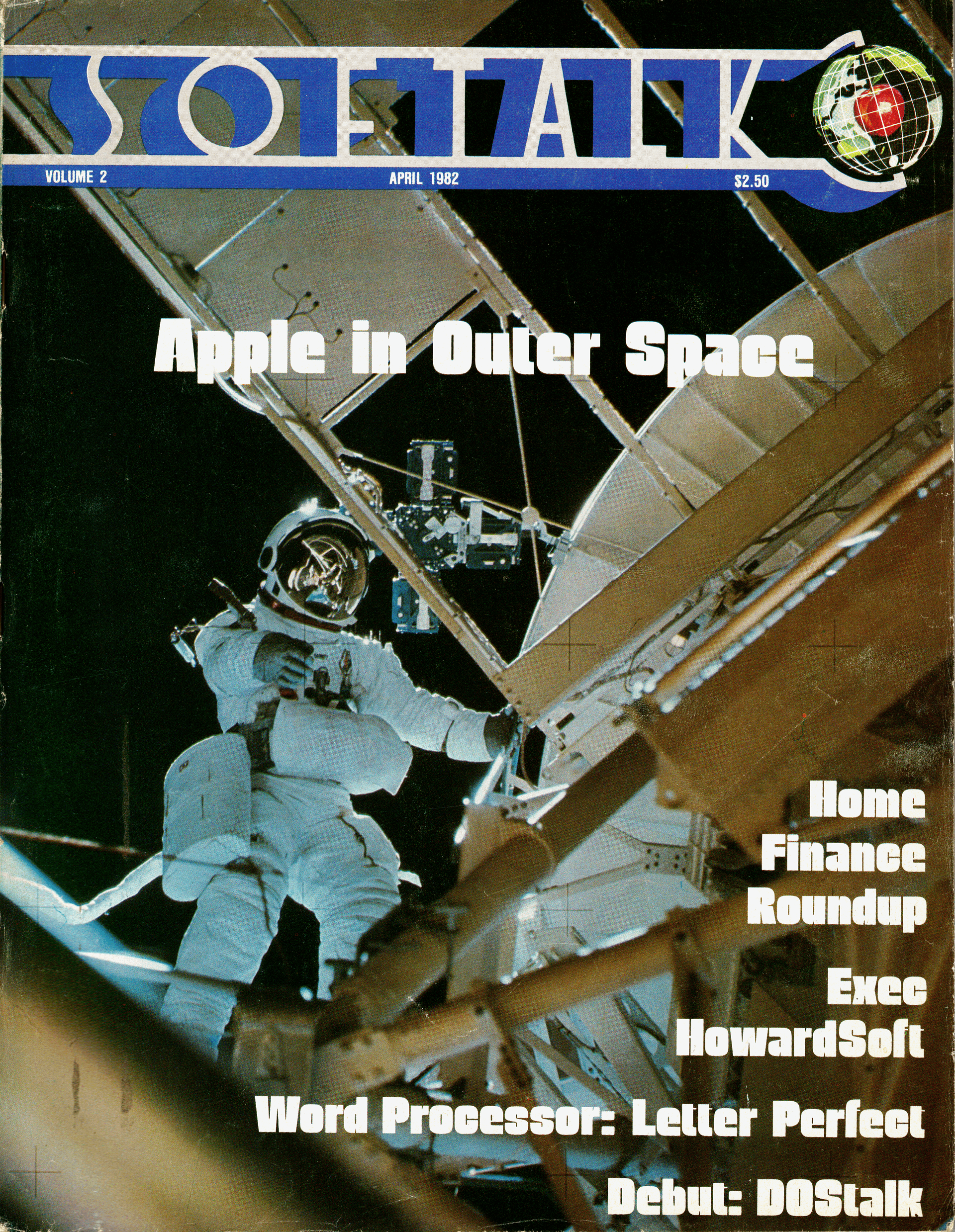
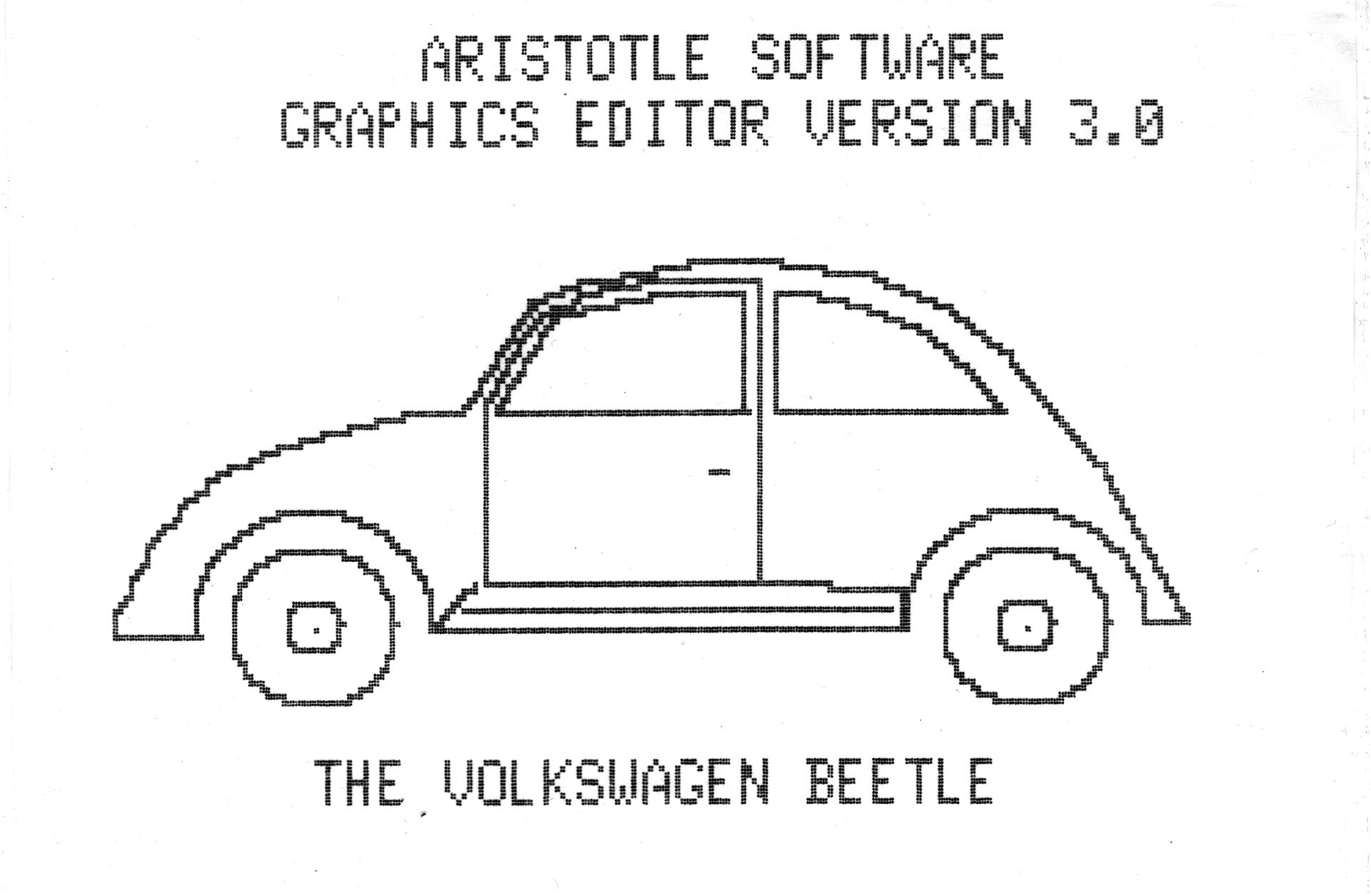
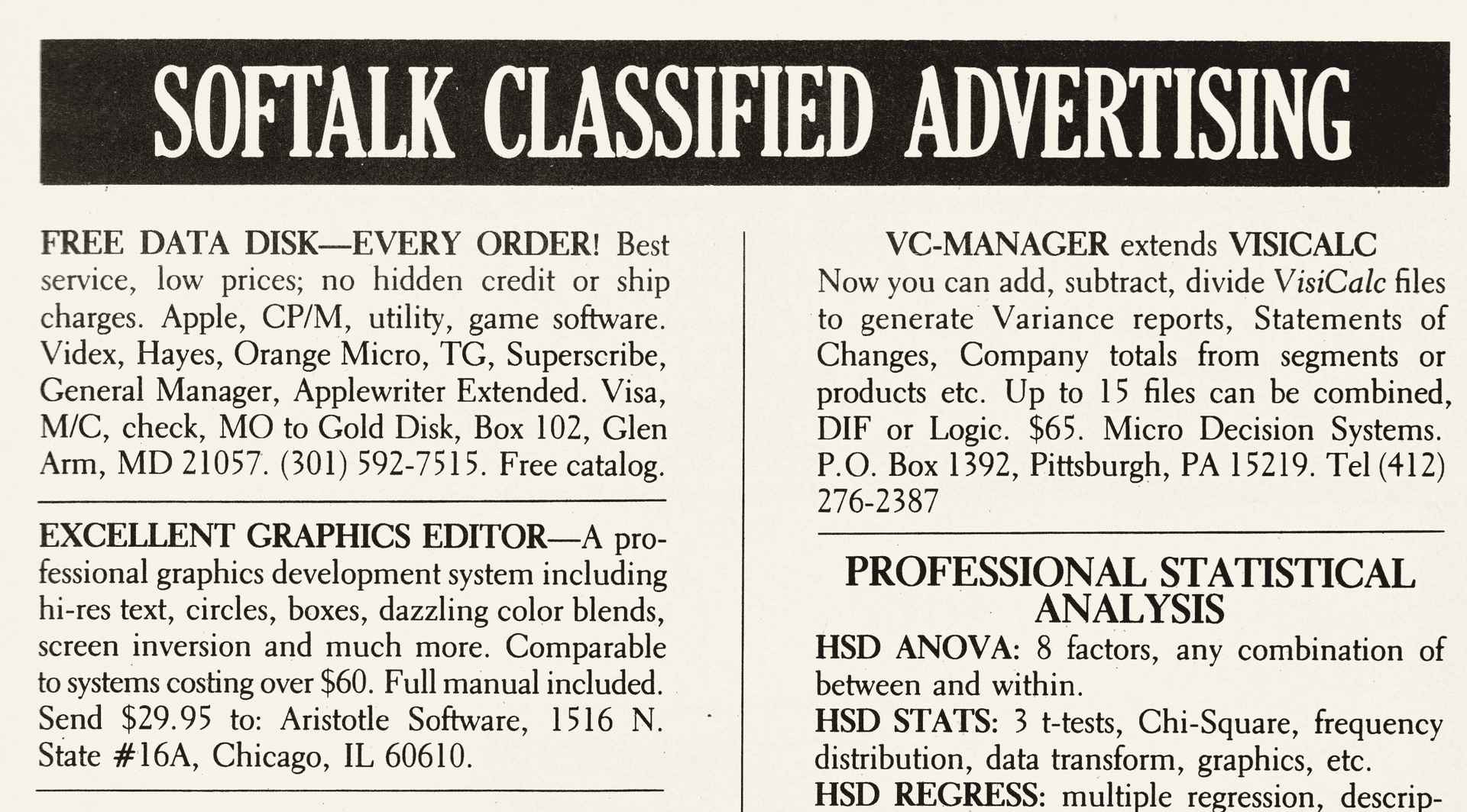
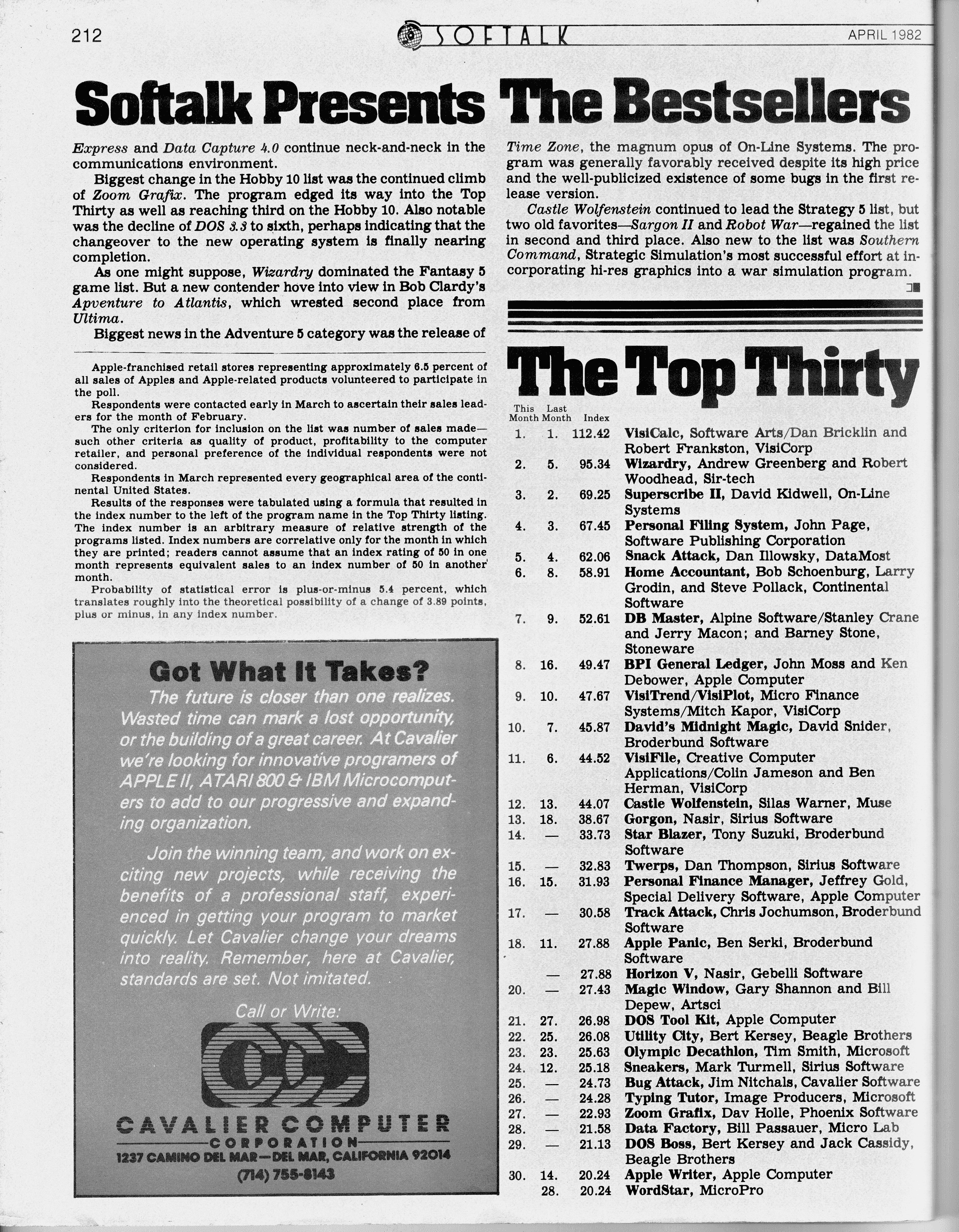
Softalk Magazine, April 1982. Our ad is the self-congratulatory one on the lower left. Aristotle Software is not on the Best Seller list, but even Microsoft doesn’t appear until numbers 23 and 26.
This was 1982, 1983, 1984. In that era, for our target market, ad costs were still modest. I got the quotes and they were not out of reach. In hindsight, we should have done a seed fundraising round to enable a higher-profile ad campaign. That would have scored us major distribution, because the distributors had all told me that the ads were their gating factor. Our products were marketable and were well-received by customers. We weren’t rich, but we lived on Chicago’s Gold Coast and went to a fancy prep school. Both of us knew a substantial population of adults (parents of friends, mostly) who were wealthy, who admired us, and I’m sure would have responded positively if we’d made the ask for investment, or professional legal and accounting services.
Aristotle Software was almost, but not quite in position to achieve escape velocity as a business. Funding was not the only constraint. On one hand there was little competition, but the software market itself was still at a formative stage, there was no means of online distribution, and my high school curriculum at the Latin School was increasingly demanding. When I wasn’t coding, I had to stay up late reading Dostoyevsky, noisily cranking out term paper revisions on a dot-matrix printer, as the sun rose behind my CRT.
